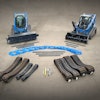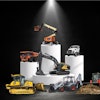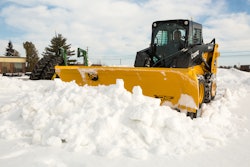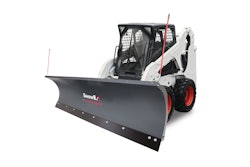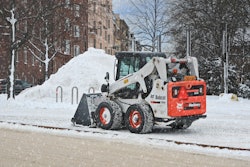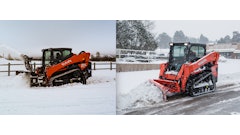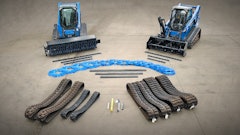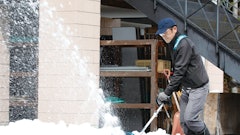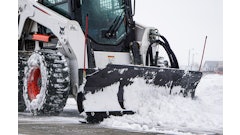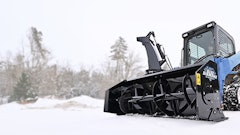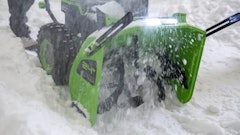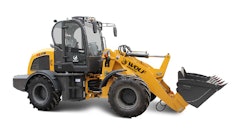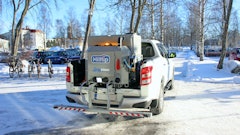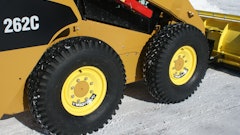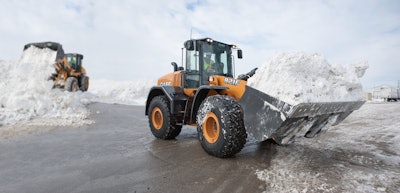
This article was originally published by the Snow and Ice Management Association (SIMA)
As the non-profit trade association for the snow management/removal industry, SIMA talks about snow a lot — and during this time of year, we try as much as possible to focus on safety. Here are some tips for you to keep in mind for the winter season if you push snow with heavy or compact equipment.
Stay protected
Even though most equipment (hopefully) that you’ll use in winter weather will have a cab or at least some protection from the elements, make sure you still wear the appropriate clothing and protective equipment. Generally we recommend hard hat, safety glasses, and hearing protection when operating skid steer loaders and other heavier equipment. Also, make sure you don’t have loose clothing that could catch on hydraulic or steering control systems.
Daily circle check
Pushing snow can be tough on any piece of equipment, so make sure you do a daily circle check of each machine that includes checking the fluids, attachments, tires/tracks, back up alarms, lights, and other key areas for damage or problems.
Train for safety
Anyone who will operate snow management equipment for your organization should go through at least annual refresher training on the machine(s) they will operate, and some detailed training specific to the uniqueness of managing snow & ice with that machine. Your safety training should include basic safety information, some hands-on time on the machine, and discussions about potential hazards. Also, make sure you have any operators sign off on safety training once its completed, and keep the files. SIMA has training videos available that include documentation examples. You can get more information at www.sima.org/resources.
Efficiency + safety = success
Efficiency in snow removal is key to staying ahead of the storm. Efficiency doesn’t mean just doing the work faster, it means speed plus performance to a defined level. Think of ways to ensure efficiency while fostering safety, like coordinating pieces of equipment onsite to work together.
Avoid excessive down pressure
Some operators in the industry apply too much down pressure while plowing, especially in skid steer loaders, causing the wheels to lift off the ground. This is not recommended as it could cause damage to property and create unsafe conditions for operators and anything nearby.
Visibility is critical
Make sure the equipment you use has adequate visibility for the operator, and that all proper lighting/warning sound devices are in working order. Especially if equipment is managing snow during the day in parking lots or in parking decks, train operators to be vigilant for pedestrians, vehicles, and obstacles, especially when backing up.
Snow management is a valuable service and should be approached with adequate preparation and attention to safety. Good luck out there, keep pushin’!

